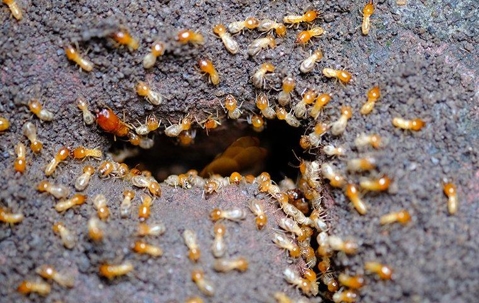In the Bay Area, the warm and humid weather creates an ideal environment for pests to thrive, and subterranean termite swarmers have become a growing worry for homeowners throughout the area. These tiny wood-eating insects may not look like much, but they can devastate your home by quietly gnawing away at its structure and foundation without you even realizing it. In this article, we'll dive deeper into the life cycle of subterranean termites, examine how they stealthily demolish a house, and, most importantly, explore how you can eliminate them and prevent future termite issues with pest control in the Bay Area. If you want to keep your home safe and financially secure, this article is for you.
The Life Cycle Of Subterranean Termites
Subterranean termites lead a complex and intriguing life cycle that kicks off with a mating flight, typically taking place in the spring or early summer when the weather is warm and humid. During this time, the winged termites, also known as alates, swarm in large numbers and search for a mate of the opposite sex. When a male and female termite pair up, they land, shed their wings, and mate.
After mating, the male termite passes away, and the female termite becomes the queen of a new colony. She starts laying eggs, which then hatch into larvae and eventually develop into workers, soldiers, and reproductive termites, setting a new subterranean termite life cycle in motion.
The worker termites take care of foraging for food, feeding the colony, and constructing tunnels and galleries within the wood. As the colony expands, some larvae grow into soldiers, which possess larger heads and strong jaws used for defending the colony. Other larvae mature into reproductive termites, responsible for leaving the nest to mate and create new colonies.
The queen termite, the largest and longest-living member of the colony, can survive for up to 25 years and lay thousands of eggs throughout her lifetime. A mature colony can consist of millions of termites working together in a highly organized and efficient way.
How Subterranean Termites Silently Destroy A House
The destructive process of subterranean termites in the Bay Area starts when they burrow underground in search of food, usually wood. Once they find a food source, they create intricate tunnels that allow them to access the wood without being seen.
As the termites feed on the wood, they weaken its structure, leading to cracks and damage. Over time, this subterranean termite damage on your Bay Area property can become severe enough to cause entire sections of the house to collapse. Even worse, subterranean termites can reproduce quickly, creating new active termite colonies and expanding their destructive reach.
How Do You Get Rid Of Subterranean Termite Swarmers?
Winged swarming termites on your Bay Area property can be your worst nightmare, causing thousands of dollars in property damage and stress. But how do you get rid of these pesky insects? One option is to use a soil-applied barrier treatment, which can prevent termites from entering your home. Another option is to use a termite baiting system, which can attract and eliminate the termites before they can do more damage.
At Bay Pest, we offer comprehensive termite control services that can help you protect your home from these destructive insects. Our experienced technicians can devise a custom plan for the best way to get rid of termites on your property. Don't let subterranean termite swarmers take over your home – contact Bay Pest today for a quote on our services.
The Key To Preventing Future Termite Troubles
With the right preventative measures, you can avoid future termite troubles. Here are some key steps you can take:
- Reduce moisture in and around your home. Termites thrive in moist environments, so be sure to fix any leaks or water damage promptly.
- Keep wood away from your home's foundation. Wood piles, tree stumps, and other wood debris can attract termites and provide a pathway into your home.
- Use termite-resistant building materials. When building or renovating your home, consider using materials that are less attractive to termites, such as concrete or steel.
- Schedule regular termite inspections. A professional inspection can identify early signs of termite activity and help you catch any problems before they become serious.
At Bay Pest, we offer a variety of termite treatments that can help you keep your home safe from these destructive pests.
Contact Bay Pest today to schedule a termite inspection.

